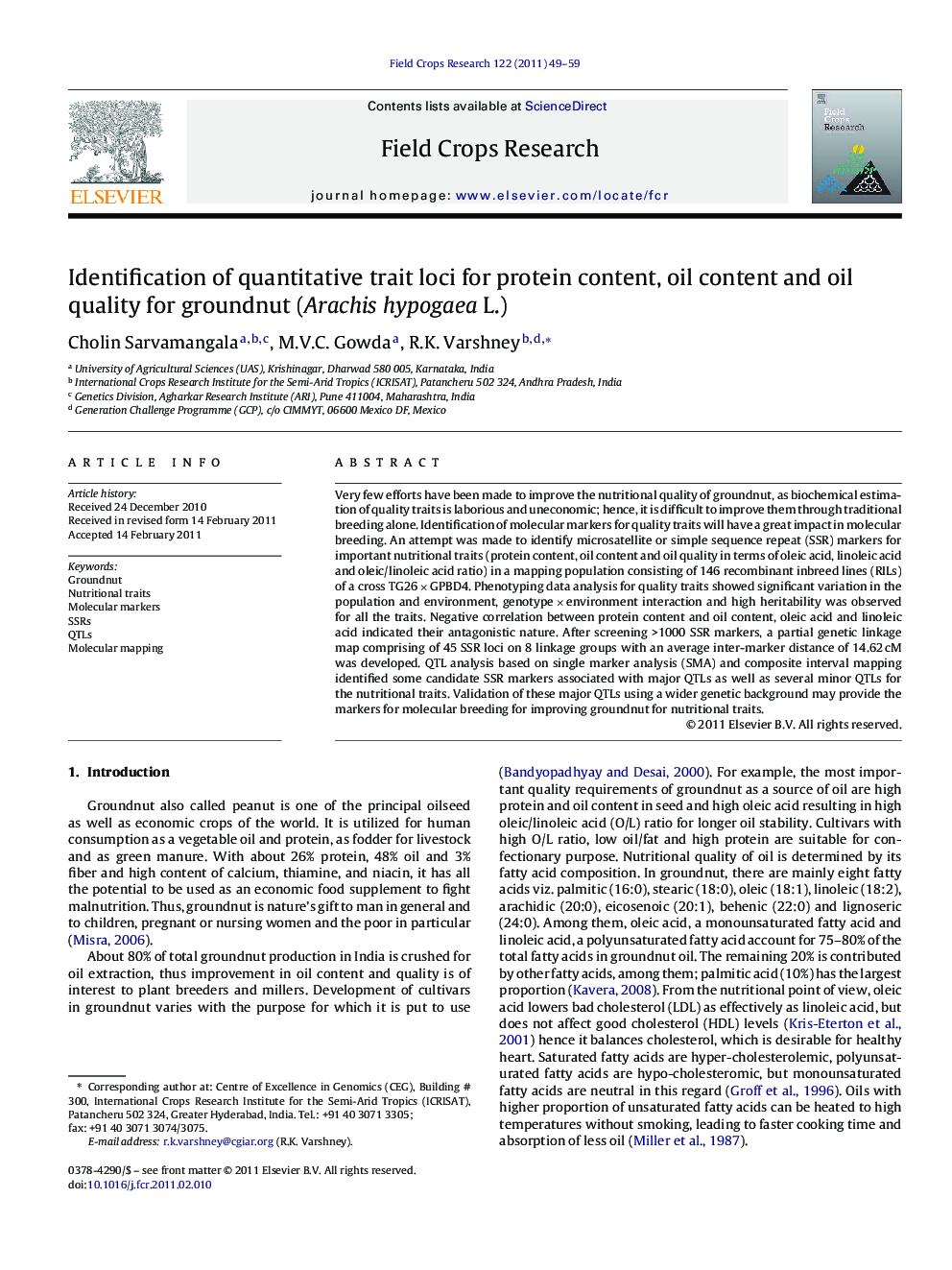| Article ID | Journal | Published Year | Pages | File Type |
|---|---|---|---|---|
| 4510787 | Field Crops Research | 2011 | 11 Pages |
Very few efforts have been made to improve the nutritional quality of groundnut, as biochemical estimation of quality traits is laborious and uneconomic; hence, it is difficult to improve them through traditional breeding alone. Identification of molecular markers for quality traits will have a great impact in molecular breeding. An attempt was made to identify microsatellite or simple sequence repeat (SSR) markers for important nutritional traits (protein content, oil content and oil quality in terms of oleic acid, linoleic acid and oleic/linoleic acid ratio) in a mapping population consisting of 146 recombinant inbreed lines (RILs) of a cross TG26 × GPBD4. Phenotyping data analysis for quality traits showed significant variation in the population and environment, genotype × environment interaction and high heritability was observed for all the traits. Negative correlation between protein content and oil content, oleic acid and linoleic acid indicated their antagonistic nature. After screening >1000 SSR markers, a partial genetic linkage map comprising of 45 SSR loci on 8 linkage groups with an average inter-marker distance of 14.62 cM was developed. QTL analysis based on single marker analysis (SMA) and composite interval mapping identified some candidate SSR markers associated with major QTLs as well as several minor QTLs for the nutritional traits. Validation of these major QTLs using a wider genetic background may provide the markers for molecular breeding for improving groundnut for nutritional traits.
► An attempt was made to identify the microsatellite markers associated with protein content, oil content and oil quality in TG26 × GPBD4 mapping population. ► Phenotyping was carried out with Near Infrared spectroscopy and genotyping with polyacrylamide gel electrophoresis. ► Statistical analysis among phenotypic data revealed G × E interaction within the population and frequency distribution was normal for all the traits indicating quantitative nature of inheritance. Negative correlation between oil content and protein content revealed their antagonistic nature. ► Linkage map of TG26 × GPBD4 population using 53 polymorphic markers revealed 8 linkage groups. ► Single marker and quantitative trait loci analysis revealed few candidate microsatellite markers such as TC6H03 for protein content, oleic acid, linoleic acid and O/L ratio and IPAHM103 for oil content.
